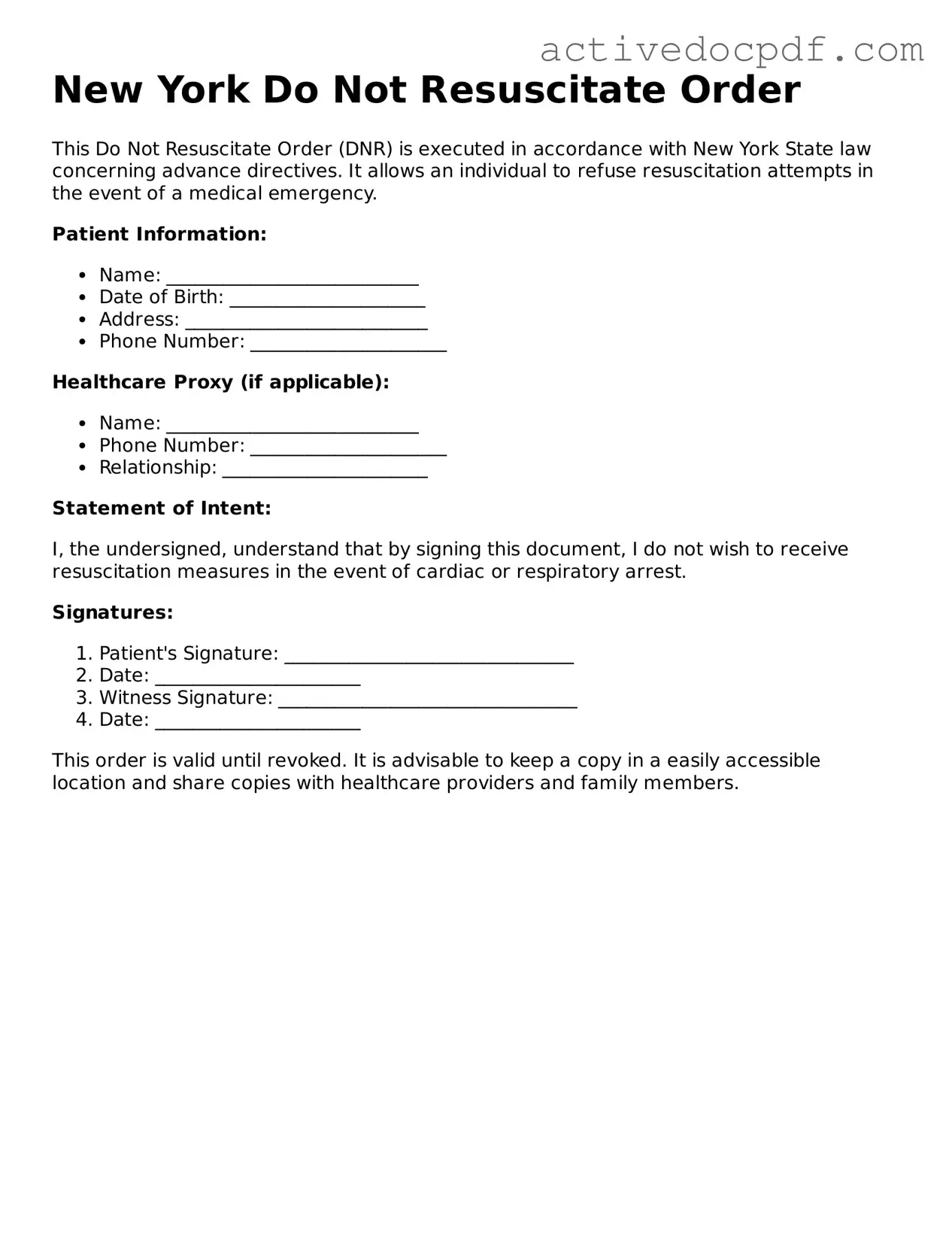What is a Do Not Resuscitate (DNR) Order in New York?
A Do Not Resuscitate Order (DNR) is a legal document that allows a person to refuse cardiopulmonary resuscitation (CPR) and other life-saving measures in the event of cardiac arrest. In New York, this order is typically used by individuals with serious medical conditions who wish to avoid aggressive medical interventions when their heart stops beating or they stop breathing.
Who can request a DNR Order?
In New York, a DNR Order can be requested by a patient who is at least 18 years old and has the capacity to make their own medical decisions. If the patient is unable to make decisions, a legally authorized representative, such as a family member or guardian, can request the order on their behalf.
How do I obtain a DNR Order in New York?
To obtain a DNR Order, follow these steps:
-
Discuss your wishes with your healthcare provider. It’s important to have a clear understanding of your medical condition and treatment options.
-
If you and your provider agree that a DNR Order is appropriate, they will help you complete the New York State DNR Order form.
-
Sign the form in the presence of a witness. This witness cannot be your healthcare provider or a family member.
-
Provide copies of the signed DNR Order to your healthcare provider, family members, and any facility where you receive care.
Is a DNR Order valid in all healthcare settings?
Yes, a properly completed DNR Order is valid in all healthcare settings in New York, including hospitals, nursing homes, and at home. However, it is essential to ensure that copies of the order are readily available to healthcare providers in case of an emergency.
Can I change or revoke my DNR Order?
Absolutely. You have the right to change or revoke your DNR Order at any time. To do this, simply inform your healthcare provider and destroy any copies of the existing order. You may then create a new DNR Order if you wish.
What happens if I don’t have a DNR Order?
If you do not have a DNR Order and your heart stops or you stop breathing, healthcare providers are required to perform CPR and other life-saving measures. This can include chest compressions, defibrillation, and medications, which may not align with your wishes if you prefer a more natural approach to end-of-life care.
How does a DNR Order affect other medical decisions?
A DNR Order specifically addresses resuscitation efforts. It does not affect other medical treatments or decisions regarding your care. You can still receive other forms of medical treatment, including pain management and comfort care, even if you have a DNR Order in place.
